In the city of Beijing, where history and modernity intertwine, numerous famous historical sites are scattered like stars, and the Temple of Heaven, an ancient and sacred architectural complex, is often overlooked by many.
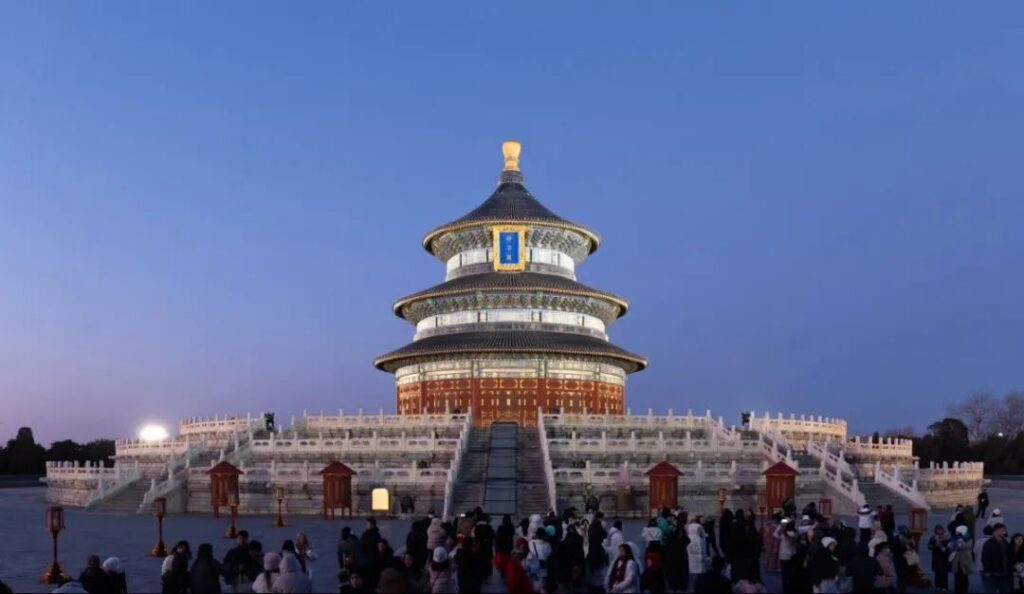
Skipping the Temple of Heaven when it’s illuminated at night means missing out on a visual feast! As night falls and the lights come on, the Hall of Prayer for Good Harvests in the Temple of Heaven radiates an unparalleled golden splendor under the illumination, making people stop and admire in awe.
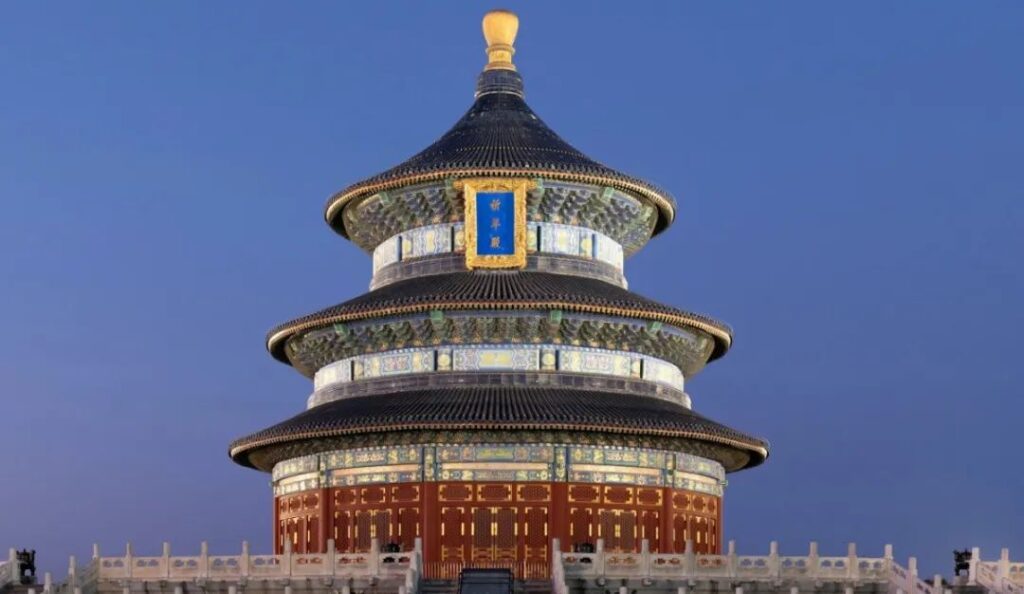
Next, here’s a detailed guide to visiting the Temple of Heaven!
History of the Temple of Heaven
The Temple of Heaven, also known as “Tian Di Tan,” is located in the Dongcheng District of Beijing. It was an important place where emperors of ancient China offered sacrifices to the gods of heaven and earth, prayed for good harvests, and sought national prosperity and peace.
Ming Dynasty Period
During the Yongle era, the construction of the main buildings of the Temple of Heaven, the Hall of Prayer for Good Harvests and the Circular Mound Altar, began.
In the middle of the Ming Dynasty, the Temple of Heaven underwent several expansions and renovations, forming a relatively complete architectural complex.
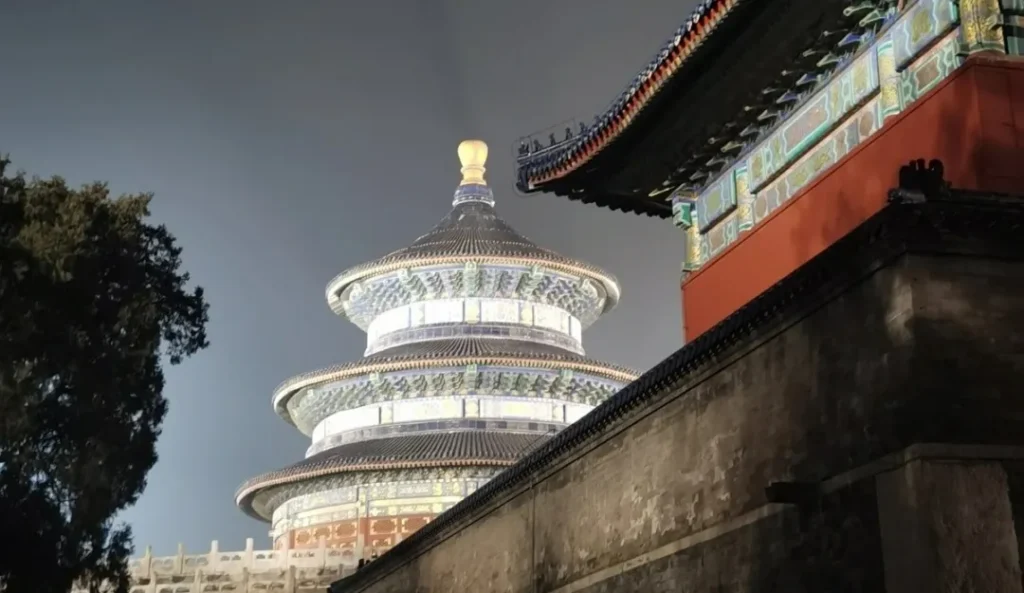
Qing Dynasty Period
In the early Qing Dynasty, the Temple of Heaven continued to serve as a place for emperors to offer sacrifices, and the buildings were further improved.
During the Qianlong era (1736-1795), the Temple of Heaven underwent large-scale renovations and expansions, including the reconstruction of the Hall of Prayer for Good Harvests and the construction of the Imperial Vault of Heaven.
During the Guangxu era (1875-1908), the Temple of Heaven was renovated again to adapt to new sacrificial needs.

Republic of China and Modern Times
After the Xinhai Revolution in 1911, the Qing Dynasty fell, and the sacrificial function of the Temple of Heaven gradually disappeared.
In 1918, the Temple of Heaven was turned into a park and opened to the public.
In 1957, the Temple of Heaven was listed as one of the first batch of national key cultural relics protection units.
In 1998, the Temple of Heaven was included in the World Cultural Heritage List by UNESCO.
Reservation and Tickets
Reservation Channel: Book tickets online in advance through the “Temple of Heaven” WeChat official account for specific time slots.
Reservation Time: Morning session from 8 am to 12 pm, afternoon session from 12 pm to 4:30 pm.
Ticket Types:
- Combo Ticket (including general admission, Hall of Prayer for Good Harvests, Echo Wall, Circular Mound Altar): 28 yuan per person at full price.
- Attraction Ticket (including Hall of Prayer for Good Harvests, Echo Wall, Circular Mound Altar): 20 yuan per person at full price.
- General Admission: 10 yuan per person at full price.
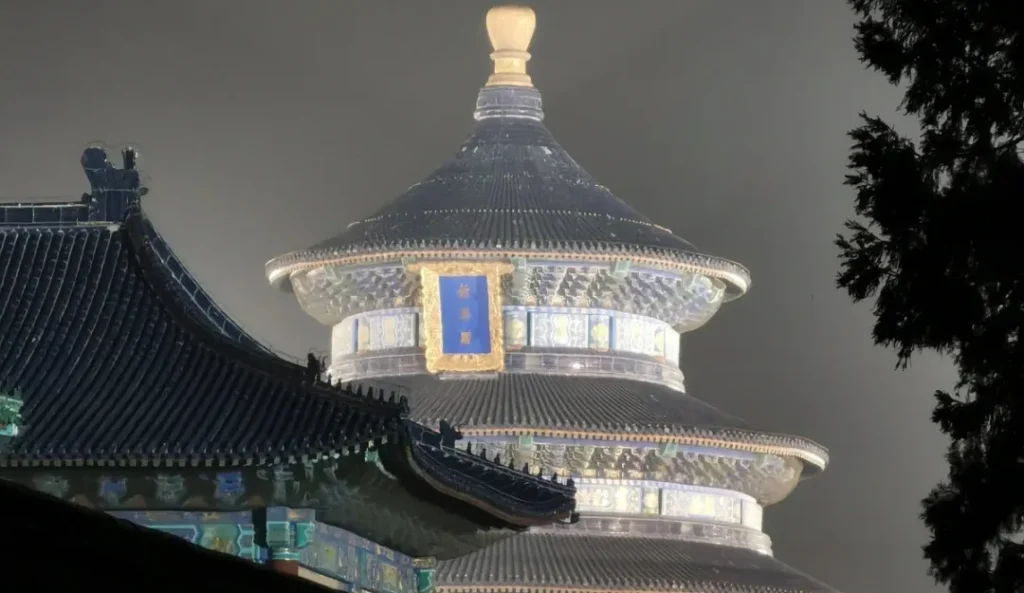
Attention! If you are under 18 years old or have reached the age of 60, you don’t need to buy tickets and can enter for free! But remember to bring your ID card or other valid documents.
For friends who don’t have an annual park pass or are not eligible for free admission, remember not to directly choose the attraction ticket! Otherwise, you won’t be allowed to enter!
Must-Visit Attractions
Seven-Star Stones: These ancient giant stones are arranged in the shape of the Big Dipper, as if they were the ancients’ worship of the cosmic order. They lie there quietly, witnessing countless starry nights.

Hall of Prayer for Good Harvests: This building is like a sacred temple under the dome of the sky, with blue glazed tiles shining with a mysterious glow under the sunlight. Its three-layered circular roof, rising in layers, seems to be expressing the emperor’s prayer for a good harvest to the sky.
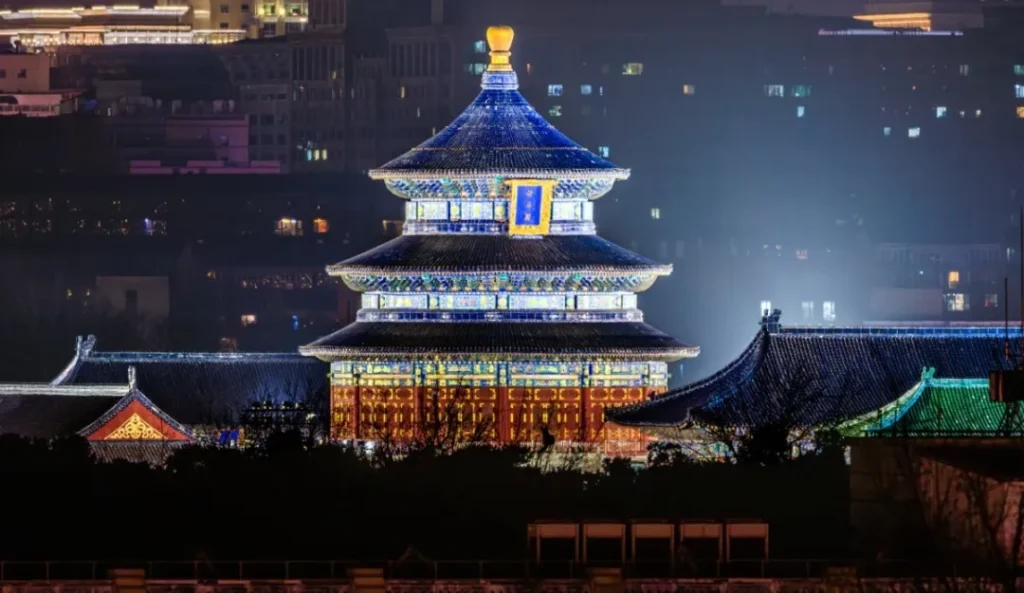
Danbi Bridge: This white marble bridge spans between the Hall of Prayer for Good Harvests and the Circular Mound Altar. The stone carvings on the balustrades are lifelike, as if they were divine beasts guarding this sacred land. Walking on the bridge, every step seems to be stepping on the echoes of history.
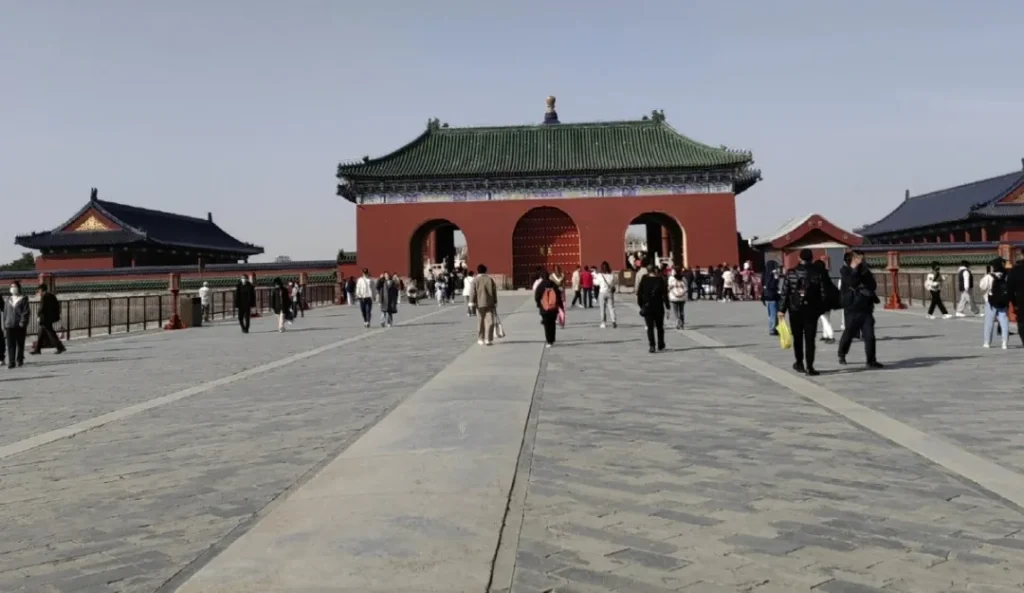
Echo Wall: This acoustic wonder is amazing. With a gentle speech, the sound reverberates between the walls, as if traveling through time and space, conversing with the ancients. Here, you can try whispering and feel the mystery and tranquility brought by the echoes.

Circular Mound Altar: This altar for sacrificing to heaven, with its three-layered circular platform, symbolizes the levels of heaven. Standing at the center of the altar, you can feel the vastness and harmony between heaven and earth. Here, you can look up at the sky and feel the solemnity of communicating with heaven and earth.
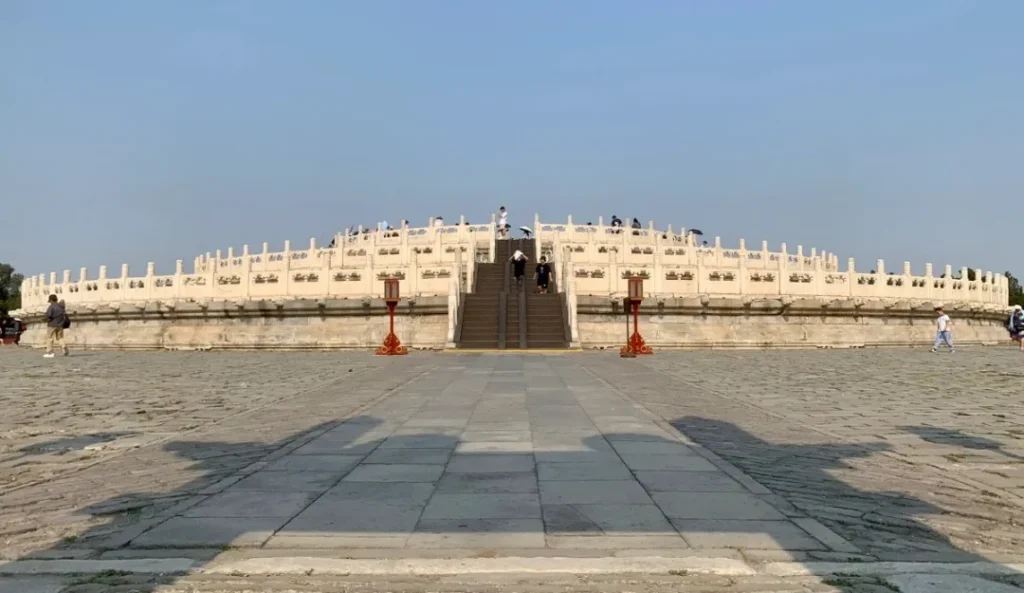
Imperial Vault of Heaven: This former place where emperors fasted still maintains its tranquility and solemnity. Here, you can imagine the emperor’s piety and solemnity on the eve of the sacrifice.
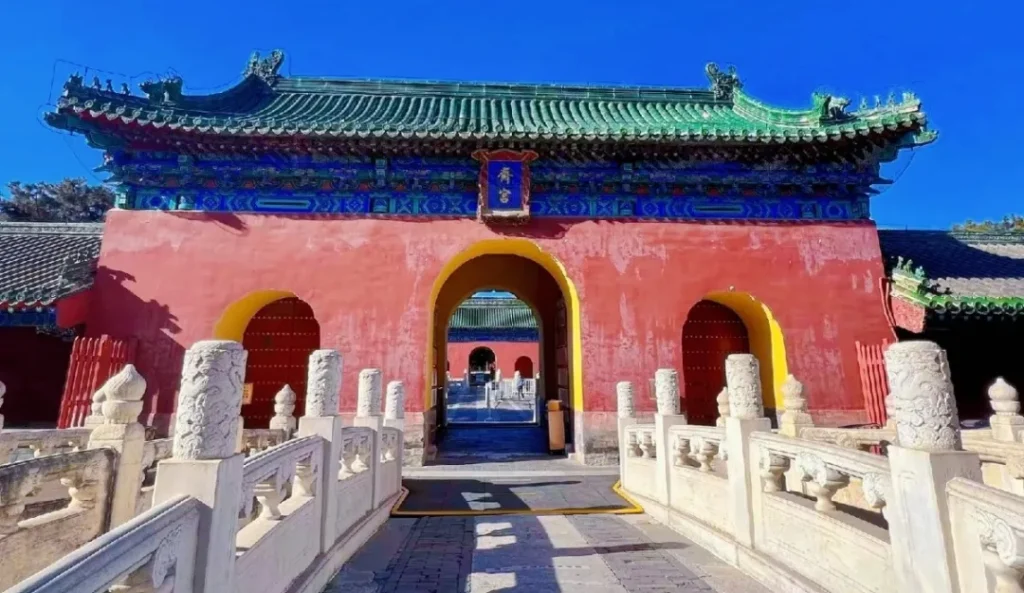
Double-Ring Longevity Pavilion: This uniquely shaped pavilion, like two bright moons, quietly watches over this ancient land. Here, you can sit and rest, feeling the peacefulness of time.

Divine Music Administration: This is the birthplace of ancient sacrificial music. The melodious music once echoed here, adding a touch of sacredness to the sacrifices between heaven and earth. Today, although the music is no longer played, the respect for music and the piety towards sacrifices can still be felt.
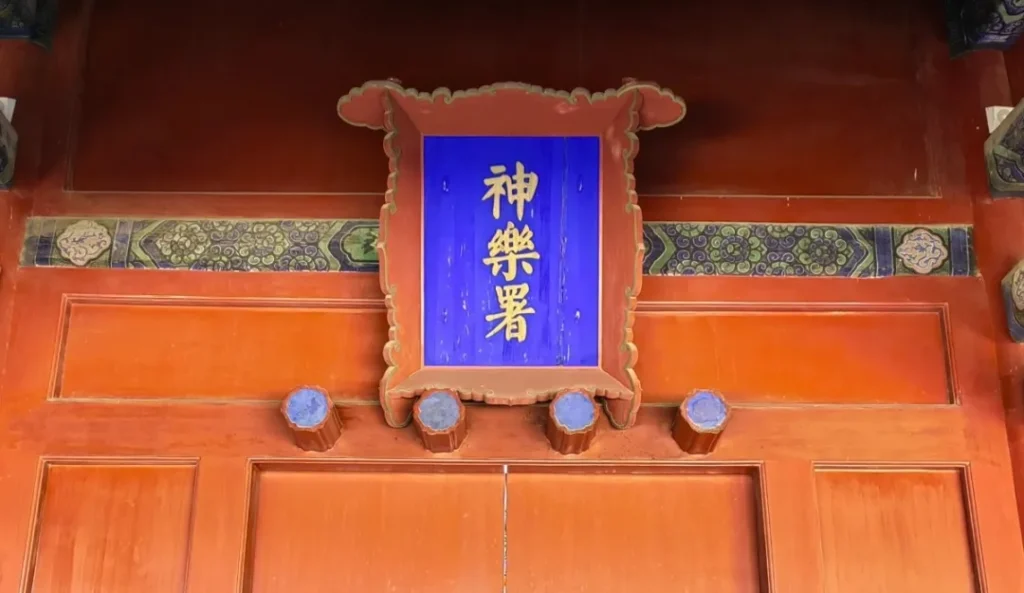
Qian Hall: This former place where emperors handled government affairs no longer has the presence of emperors, but the majesty and solemnity still command respect. Here, you can imagine the emperor sitting on the dragon throne, making decisions on state affairs with an impressive demeanor.
Recommended Tour Routes
Entering from the East Gate: The tour takes about 3 hours. The tour route is Seven-Star Stones → Hall of Prayer for Good Harvests → Danbi Bridge → Echo Wall → Circular Mound Altar → Imperial Vault of Heaven → Double-Ring Longevity Pavilion.
Entering from the West Gate: The tour takes about 2 hours. The tour route is Divine Music Administration → Imperial Vault of Heaven → Double-Ring Longevity Pavilion → Hall of Prayer for Good Harvests.
Entering from the South Gate: The tour takes about 3 hours. The tour route is Circular Mound Altar → Echo Wall → Danbi Bridge → Hall of Prayer for Good Harvests → Double-Ring Longevity Pavilion → Imperial Vault of Heaven.
Entering from the North Gate: The tour takes about 3 hours. The recommended route is Palace of Abstinence → Hall of Prayer for Good Harvests → Danbi Bridge → Echo Wall → Circular Mound Altar → Imperial Vault of Heaven → Double-Ring Longevity Pavilion.
Transportation Guide
Metro
West Gate: Take Metro Line 8 and get off at Tianqiao Station, Exit C.
East Gate: Take Metro Line 5 and get off at Tiantan East Gate Station, Exit A.
Bus
- East Gate: Take Bus No. 6, 34, 35, 36, 39, 41, 43, 60, 72, 116, 128, 525, 599, 684 and get off at Fahua Temple Station; or take Bus No. 54, 957, 958 and get off at Temple of Heaven Stadium Station.
- South Gate: Take Bus No. 36, 53, 62, 122, 525, 958, Special Line 11, Special Line 12 Inner Ring, Special Line 12 Outer Ring and get off at Tiantan South Gate.
- West Gate: Take Bus No. 2, 20, 36, 53, 71, 72, 90, 93, 120, 622, Express Bus Line 1, Special Line 11 and get off at Tiantan West Gate.
- North Gate: Take Bus No. 6, 34, 35, 36, 72, 106, 110 and get off at Tiantan North Gate.





